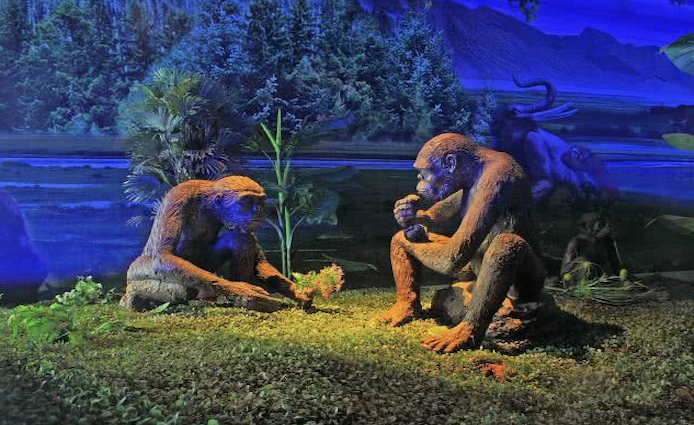
The Yuanmou Man 2

The Yuanmou Formation has been identified as a fossil-bearing site since the 1920s, and palaeontological work on the area suggests a Lower Pleistocene age. Because the formation is faulted (several rock masses have been displaced), biostratigraphy (dating an area based on animal remains) of the human-bearing layer is impossible.
In 1976, Li Pu and colleagues palaeomagnetically dated the incisors to the Gilsa geomagnetic polarity event (when the Earth's magnetic polarity reversed for a short interval) roughly 1.7 million years ago. In 1977, with a much larger sample size, Cheng Guoliang and colleagues instead placed the area during the Olduvai subchron and dated it to 1.64–1.63 million years ago. In 1979, Li Renwei and Lin Daxing measured the alloisoleucine/isoleucine protein ratio in animal bones and produced a date of 0.8 million years ago for the Yuanmou Man. In 1983, Liu Dongsheng and Ding Menglin — using palaeomagnetism, biostratigraphy, and lithostratigraphy — reported date of 0.6–0.5 million years ago during the Middle Pleistocene, despite the animal remains pointing to an older date.
In 1988, Q. Z. Liang agreed with Cheng on dating it to the Olduvai subchron. In 1991, Qian and Guo Xing Zhou came to the same conclusion as Liang. In 1998, R. Grün and colleagues, using electron spin resonance dating on 14 horse and rhino teeth, calculated an interval of 1.6–1.1 million years ago. In 2002, Masayuki Hyodo and colleagues, using palaeomagnetism, reported date of 0.7 million years ago near the Matuyama–Brunhes geomagnetic boundary during the Middle Pleistocene. Later that year, the boundary was re-dated to 0.79–0.78 million years ago by geophysicist Brad Singer and colleagues. In 2003, Ri Xiang Zhu and colleagues made note of the inconsistency among previous palaeomagnetic studies, and in 2008 palaeomagnetically dated it to roughly 1.7 million years ago. They believed Middle Pleistocene dates were probably caused by too small a sample size. The tibia was probably found somewhere in layers 25–28, and by Zhu's calculations would date to 1.7–1.4 million years ago.
The date of 1.7 million years ago is widely cited. This makes the Yuanmou Man the earliest fossil evidence of humans in China, and roughly contemporaneous with the oldest humans in Southeast Asia. It was part of a major expansion of H. erectus across Asia, the species extending from 40°N in Xiaochangliang to 7°S in Java, and inhabiting temperate grassland to a tropical woodland. The Yuanmou Man is only slightly younger than the Dmanisi hominins from the Caucasus, 1.77–1.75 million years old, who are the oldest fossil evidence of human emigration out of Africa. These dates could therefore mean that humans spread rather rapidly across the Old World, over less than 70,000 years. Yuanmou Man could also indicate humans dispersed from south to north across China, but there are too few other well-constrained early Chinese sites to test this hypothesis. Humans likely already settled in China at the earliest 2.12 million years ago evidenced by stone tools recovered from the Loess Plateau in northwestern China.
Reference: Wikipedia
Photo resource:Internet
If there's any copyright issue involved, please contact us to delete.



